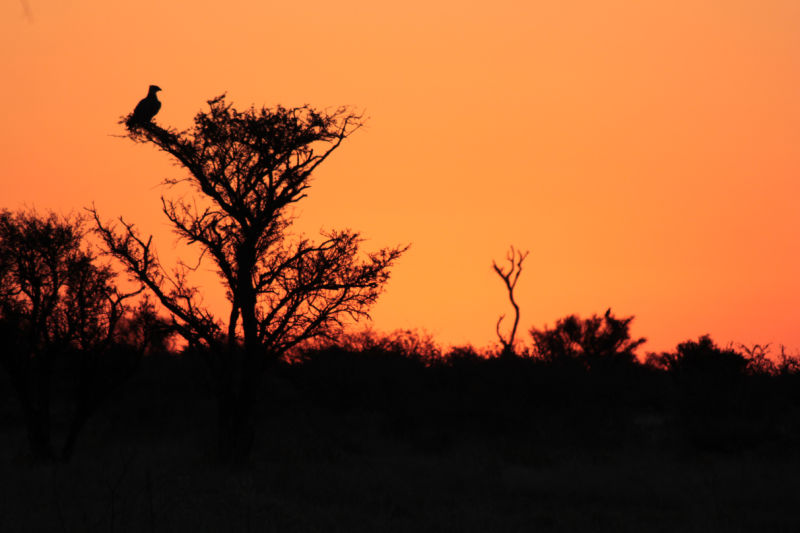
Khutse Game Reserve appears on the map as a wee rhombus, almost an afterthought, tacked on to the bottom of the massive Central Kalahari Game Reserve (CKGR) – the second largest wildlife reserve on planet Earth. But at nearly 1000 square miles, Khutse is not exactly small.
It lies only 120 miles from Gaborone, and is known for its lions, giraffes, rare brown hyenas, and herds of gemsbok and hartebeest.
(You can read how we prepared for this trip in my previous post.)
The campsites, like those found on many American public lands, are maintained and administered by a private concessionaire, in this case, Bigfoot Tours. The camping is relatively expensive at $38 per night for two people, but this is typical for Botswana National Parks. The Reserve entrance fee is a nominal $5 per person, plus $5 for the vehicle.
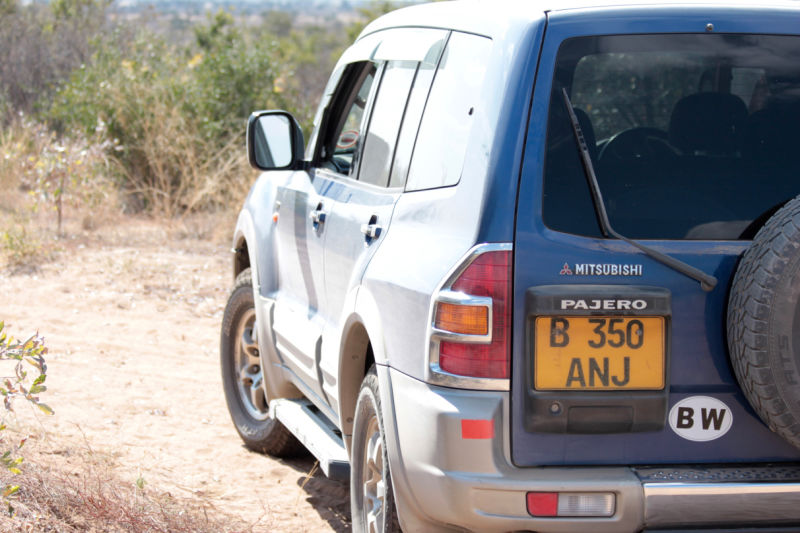
Khutse means “the place where you can kneel down and drink”, which speaks to its geologic history as an ancient nexus of several large river drainages. In winter, the only reminders of the old waters are the sprawling hard-pans (remnants of former lakes), and a handful of isolated watering holes, pumped with solar energy from the aquifer by the Park Service for the benefit of the wildlife that call Khutse home.
The Reserve is also one of the few in Botswana established on traditional tribal land once occupied by the San people. Many San still live in the villages and sandy hamlets to the south of Khutse. Like many desert places around the world, local memory and knowledge run deep in the Kalahari, as the San and their genetic ancestors have lived in what is now Botswana for nearly 70,000 years.
We had arrived on a Friday afternoon in August.


The asphalt highway ends north of the village of Letlhakeng, the final chance for fuel before the great empty of the Kalahari unfolds before you. A shift into four-wheel-drive, a ten Pula tip for the woman who pumps your gas, and the final sixty miles of washboard sand, bedrock, and rogue cattle bring you to the thatched-roofed entrance gate of the Reserve.
What welcomes you to the Kalahari?
Would you believe melons?
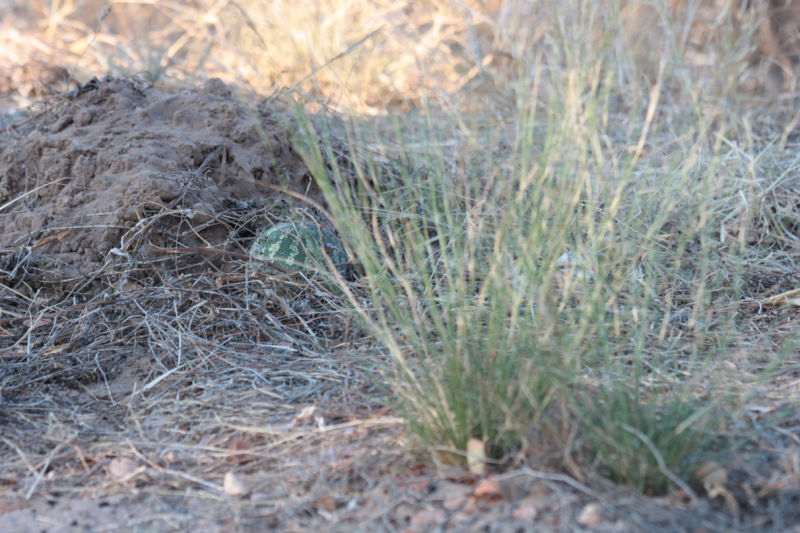
Yes, that little orb lurking in the bushes is the citrullus lanatus, or “Kalahari melon”. Perfectly edible, these bitter members of the pumpkin family can be found scattered seemingly at random throughout the central deserts of Botswana. They are a surprising and incongruous sight.
In a land of thorns, spikes, barbs, and spines, spotting the softball-sized vegetables is more than reason enough to stop the truck short, pick one up, and marvel at its heft and smooth, spherical perfection.
Of course, they are also wonders of adaptation. Chock full of water, the melons are irresistible to desert antelopes, and their seeds – torturously processed through many ungulate stomachs – are sown wherever the gemsboks, springboks, and kudus gather.
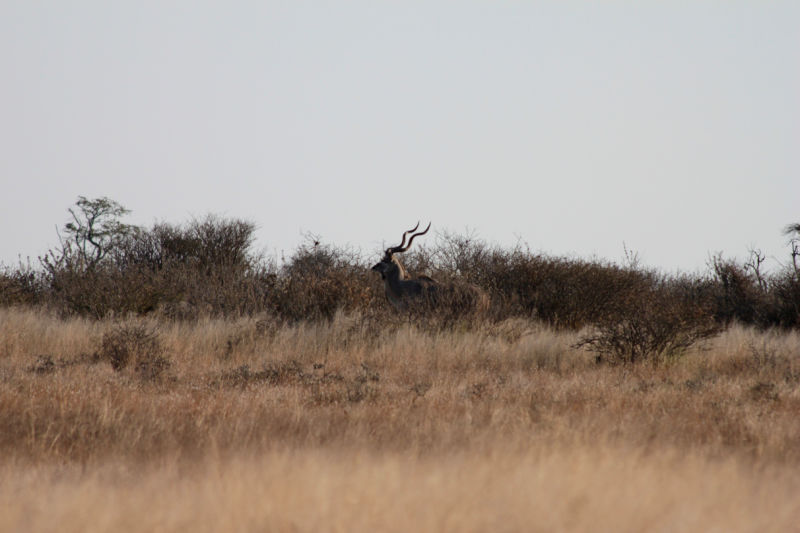
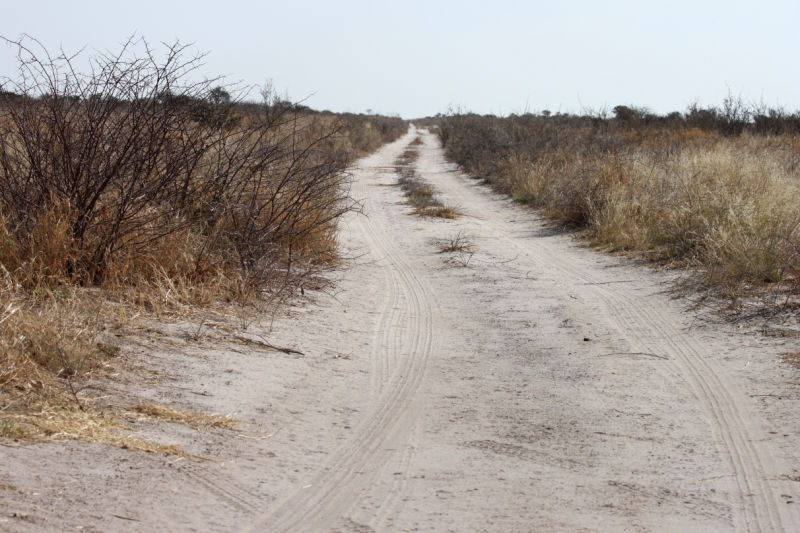
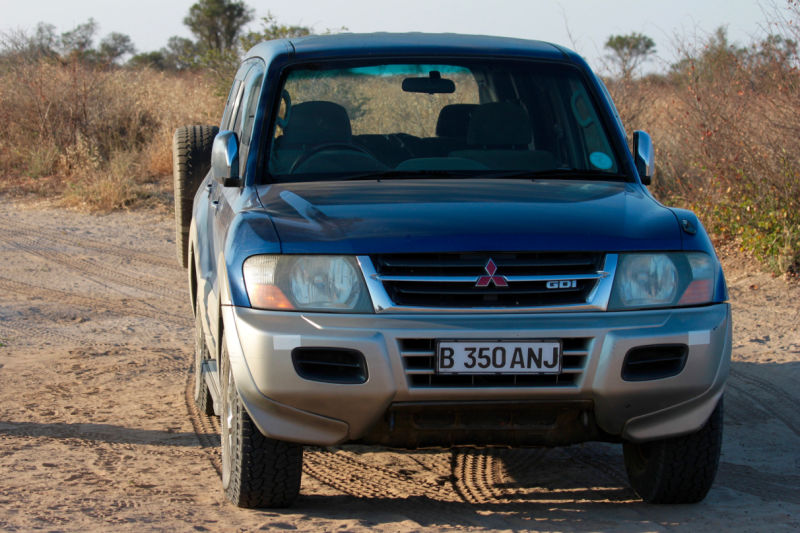
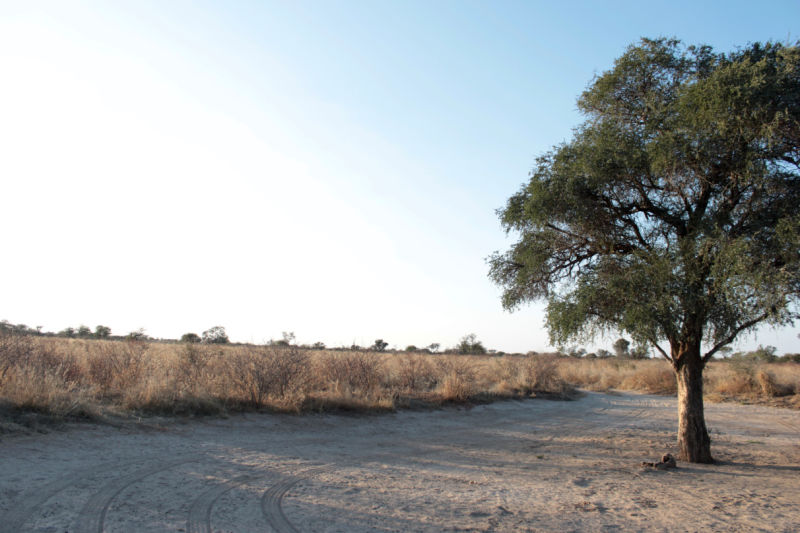
Gathering also was the darkness, as we had arrived at Khutse relatively late in the day. Our reserved campsite at Mahurushele Pan, technically located north of the official border of Khutse in the CKGR, was still miles away.
Pulling in early to your campsite is important in the Kalahari. The sun sets fast and spectacularly in the airborne desert dust – an event you don’t want to miss while you are scrambling to set up camp.
Also, lions.
As we prepared our dinner in the dusk and built a small fire, a straw-colored fruit bat swooped in low and silent on leathery wings – an unexpected but companionable neighbor. The francolins, curious ground-bound birds, strutted and stuttered among the high grasses at the edge of the campsite.
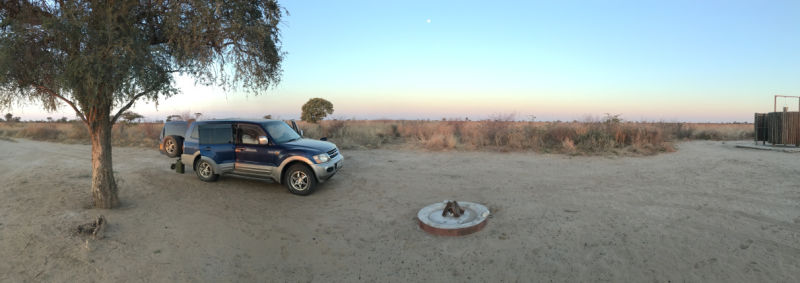

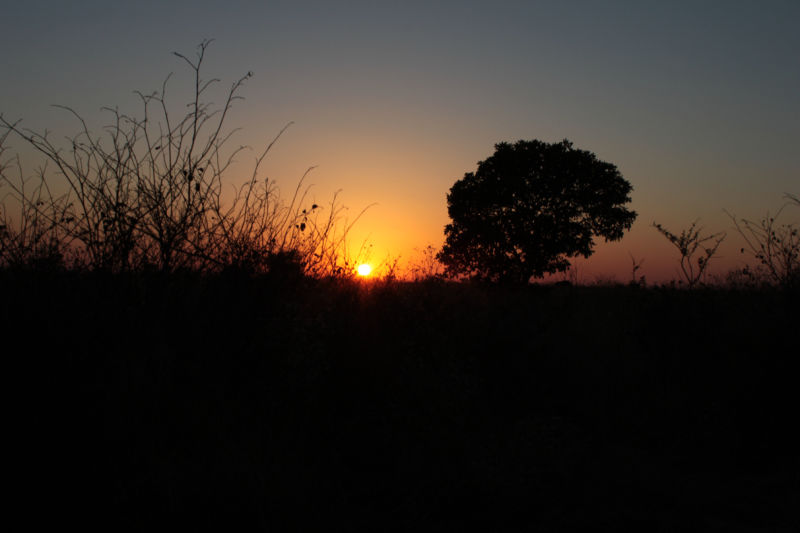
The Pajero was not only our transportation, but our sleeping quarters for this trip as well. A too-small inflatable mattress, some pillows, and a down blanket that had bravely made the 10,000 mile trek from our home in Montana, all spread across the reclined seats of the Mitsubishi made for a cramped but efficient bed for the night.
August is the tail end of winter in Botswana, and the near-freezing chill of the Kalahari night seeped in without mercy. The colder it is, the easier I find it to rouse myself in the early morning hours – no sense shivering in bed when you can be equally cold, but up and alive to the dawn, ready for the next adventure.
A thermos filled with hot tea and a hasty breakfast assembled, our goal that morning was the waterhole at Molose Pan – a relatively short drive south and west from our first campsite. We hoped to find the wildlife of Khutse gathering there for an early cuppa of their own.
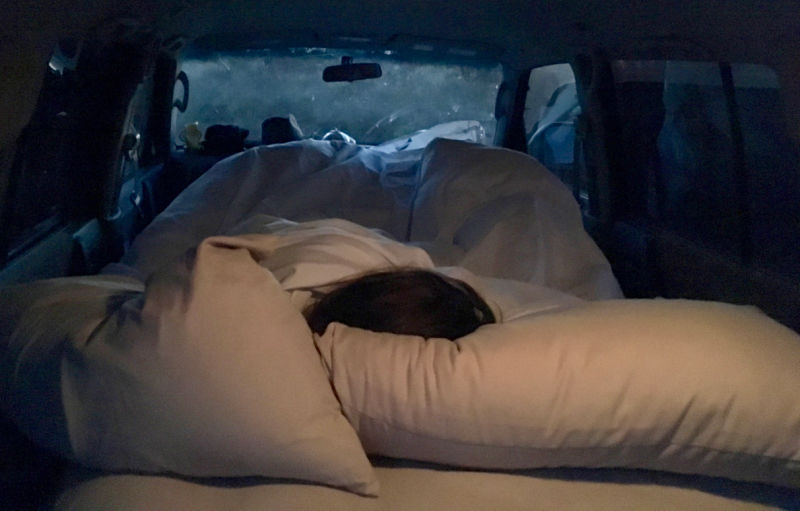
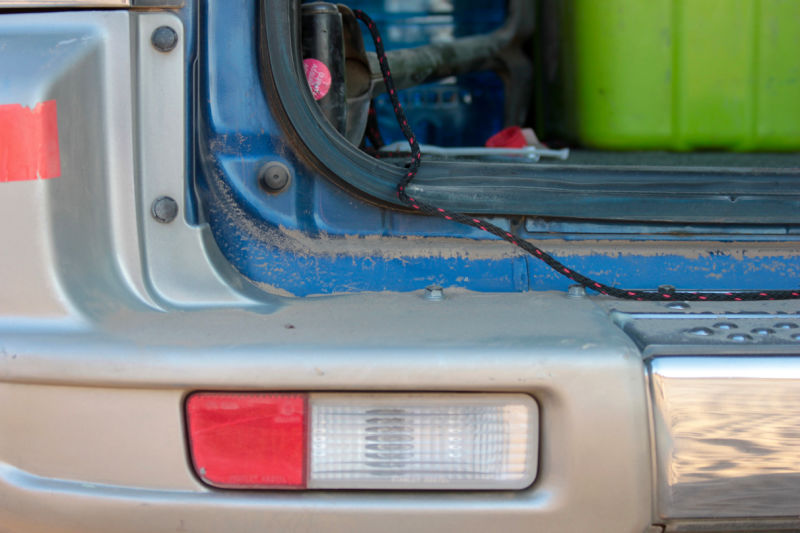
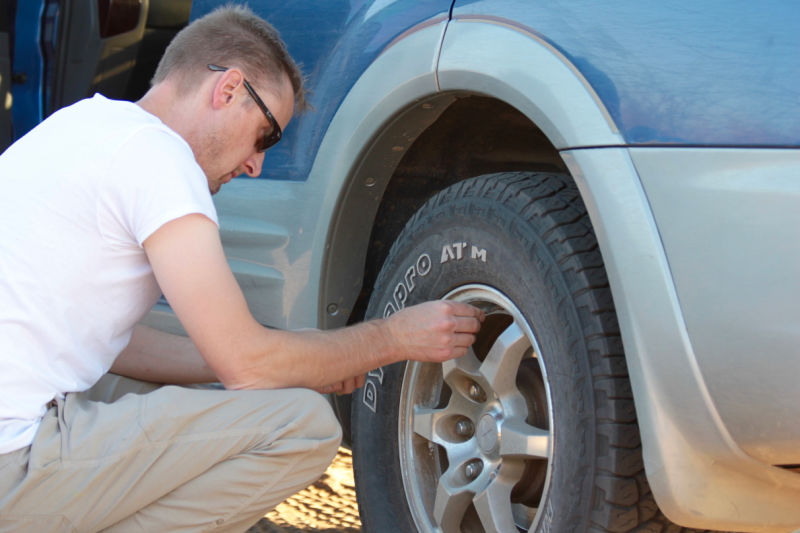
Our efforts to get moving quickly were rewarded almost immediately.
The roads in the game reserves in Botswana draw wildlife for many reasons – ease of travel, an opportunity to track prey or find forage, warmth in the early hours where the sun’s rays are unimpeded.
Steering around a blind left-hand curve we found a buff-colored creature lounging in the middle of the track. The size and shape of a small mountain lion, but with the tufted ears of a bobcat, the caracal is a rare species in southern Africa. It moved more quickly from its slumber than I had that morning, and within seconds it was gone – escaping into the tangle of acacia and tall grass.
This encounter was truly a gift – but what waited for us a few miles down the road was possibly even more astounding. A mother honey badger and her cub were strolling casually along the Molose road, on their way to where ever honey badgers go (i.e., where ever they fucking want to go). Catching sight of us, they began to run, and we followed them for a few hundred yards.
Twice, the mother stopped and reared up, baring her teeth, bent wholly on our destruction. We stopped too. Of all the animals in southern Africa you least want to tangle with, the honey badger may well be at the top. Even from the relative safety of a two-ton truck.
The ratel (as they are also known) has long been one of the animals we most wanted to see in Africa. Julie said, “This is the best day of my life.” I think she meant it.
This blurry image, which I hesitate to post even now, is all the evidence of the honey badgers we can safely muster. They may be coming for us.
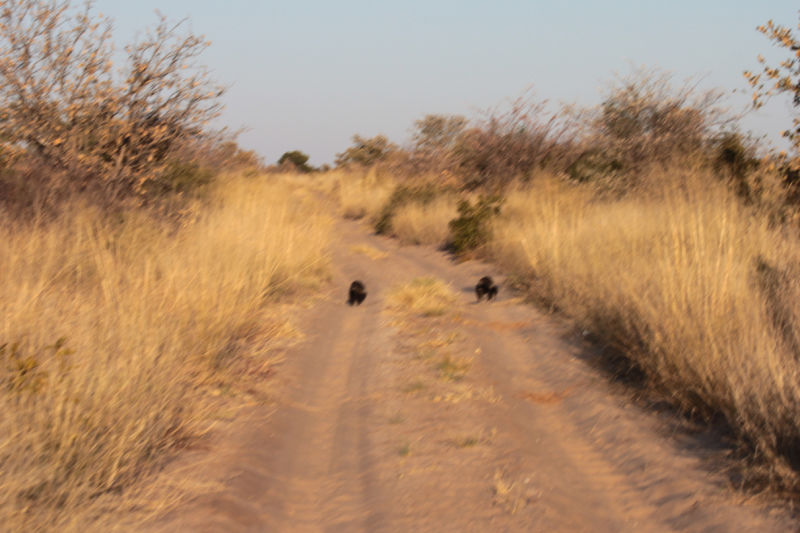
On reaching the waterhole at Molose Pan, we found only a lonely springbok bull, staking his claim to the best of the thin shade, and a handful of skittish kudu cows. What captured most of our attention was a martial eagle – the largest raptor in Africa – diving for its breakfast among the plovers, guinea fowl, and unidentified rodents scurrying for shelter in the brambles near the water’s edge. The martial eagle stands three feet tall, and can hunt small livestock and antelope.
You can imagine our astonishment when later the same day, as we revisited the waterhole before setting up camp, two more eagles arrived to challenge the one we had seen that morning. They screeched loudly, and clashed in mid-air with their huge booted talons.
This is why we had left the city. This is why we had come to Africa.


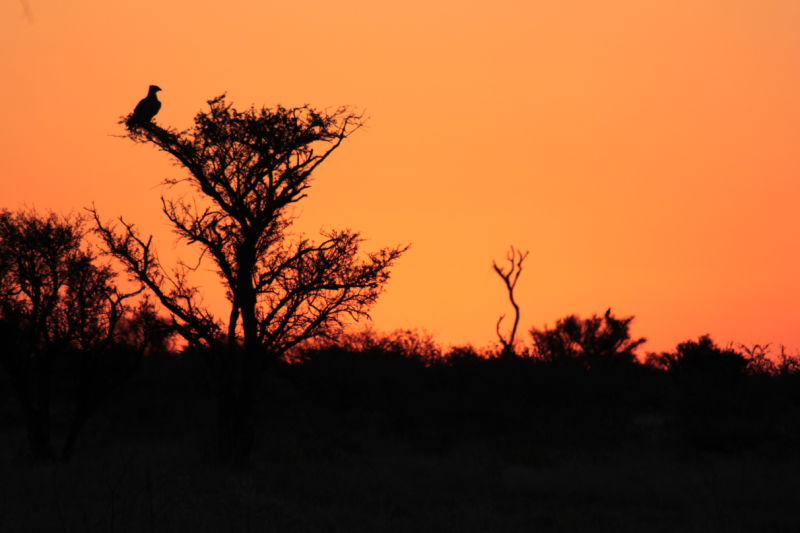
Previously, in the heat of the day we had retired to our campsite nearby the waterhole to eat some lunch, and, like the springbok, find shelter under the acacia trees. I had noticed a strange rattle from under the hood of the Pajero as we drove on the bumpy tracks, and on further inspection found that the two bolts that held the battery tray in place were dangerously loose.
Using the crescent wrenches and ratchet set I had purchased earlier in the week, I was able to re-secure the battery in a just a few minutes. Maybe those malls aren’t so bad after all.
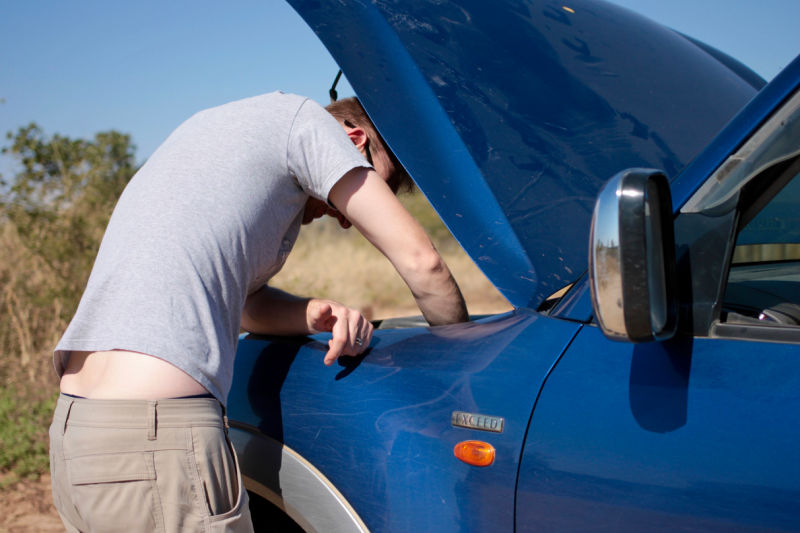

Glancing down at the sand, we also noticed this. There are many ambiguous tracks to be found in the Kalahari, but these are unmistakeable.
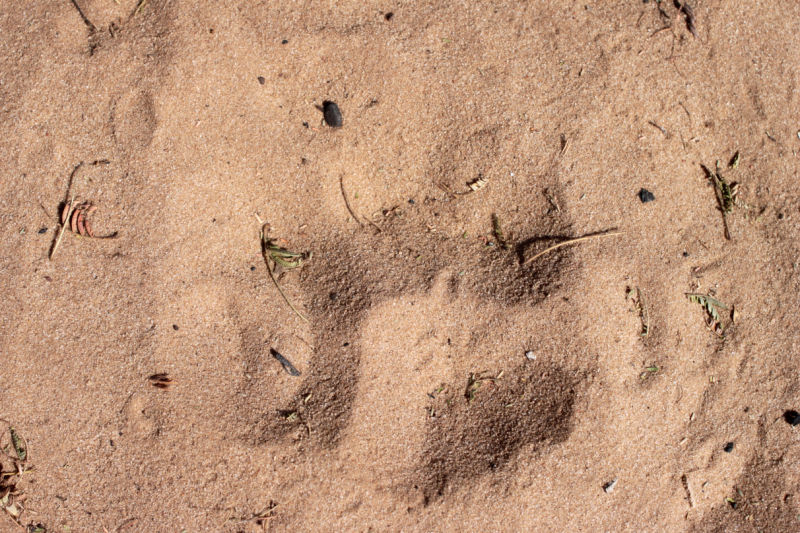
Khutse is famous for its lions, and we had been harboring hopes for an encounter with the top predators of the desert ever since we left Botswana two years ago without seeing a single one.
After sunset, we prepared for a second night camped out beneath the Southern Cross. Sitting before a small fire smoldering in the pit, and listening to a rowdy group of South Africans enjoying a braai in the neighboring campsite, we heard loud rustling in the brush nearby.
Just how committed were we to this lion thing, anyway?
Not enough to do anything at that moment other than retreat hastily to the comforts of the big Mitsubishi, and scan the brush nervously with our flashlight. I guess that bathroom break would have to wait until morning.
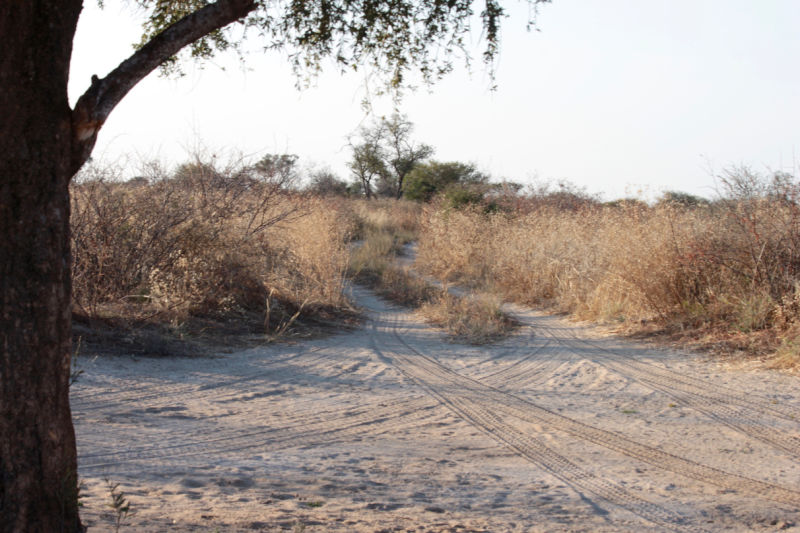
* * *
So, no lions this time (as far as we know), but what other animals came our way?
A giraffe under the full moon on a desert evening needs no words, demands no poetry.
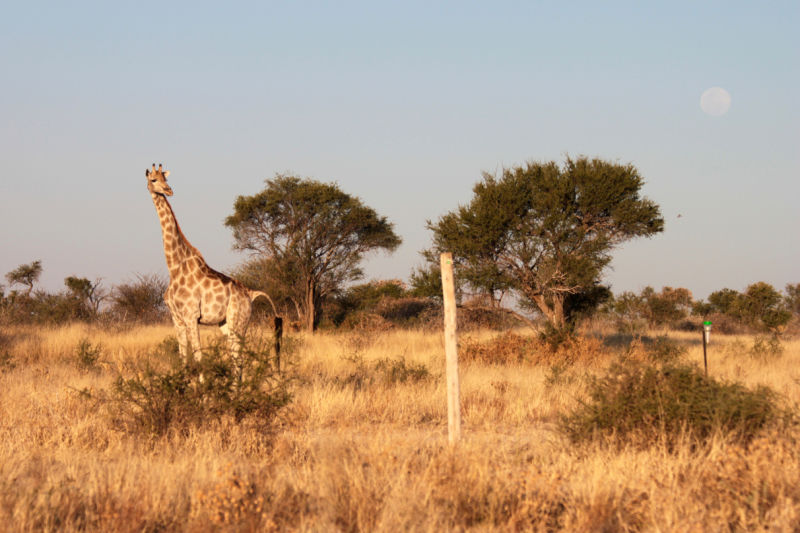
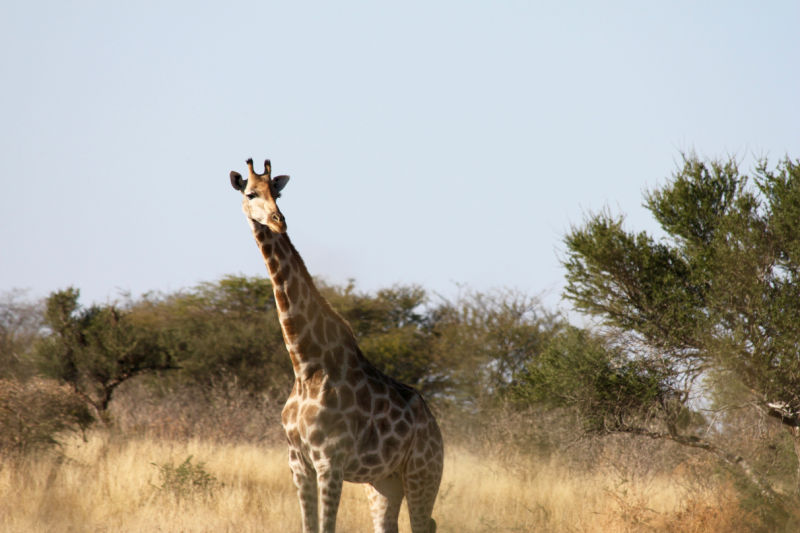
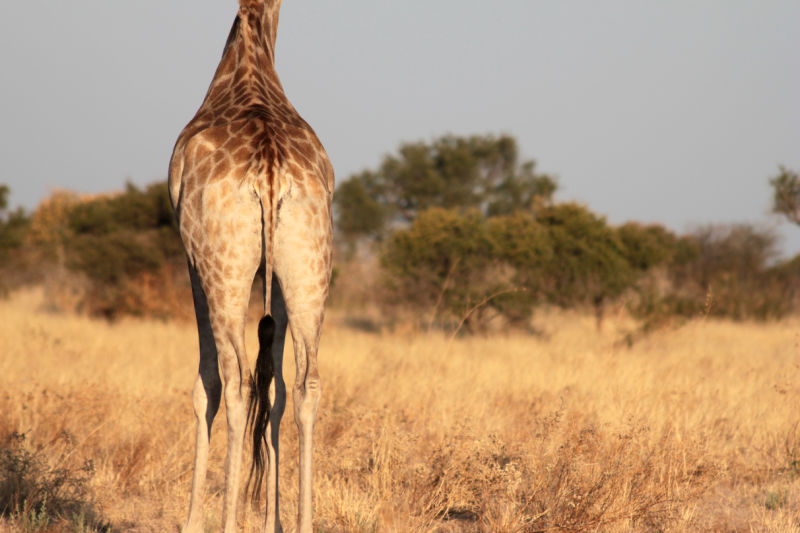
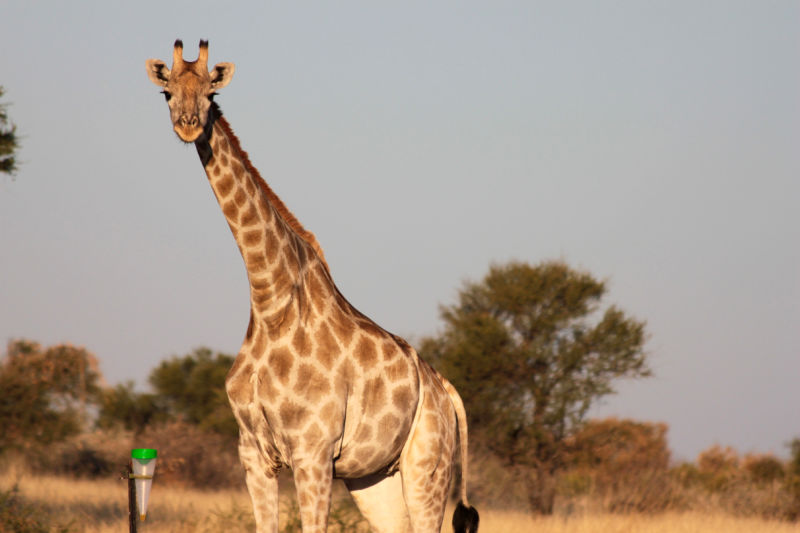

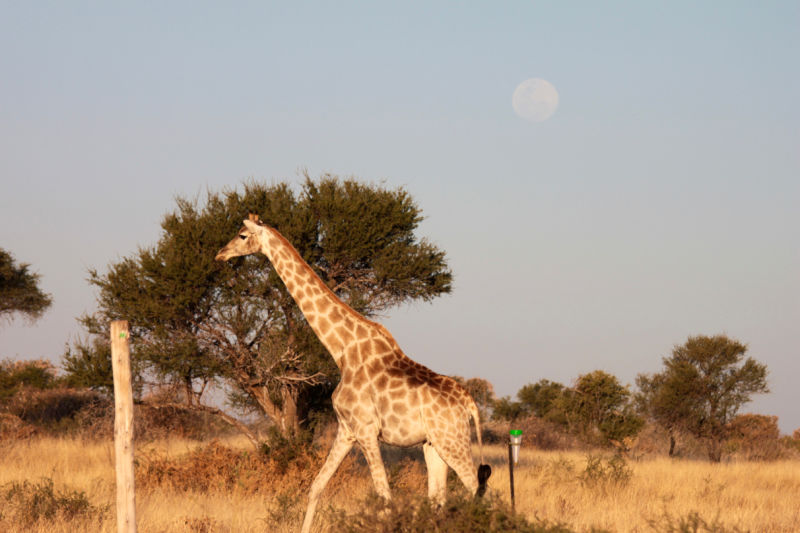
* * *
As with the lions, sometimes the most exhilarating encounters with wildlife are the ones that remain out of reach – the firing of the imagination in their absence.
Elephants are rare – though increasingly more common – in the southern reaches of the Kalahari. But their sign was everywhere in Khutse – from the trampled grasses, splintered trees, and monstrous dung piles, to the serving-platter sized tracks in the silt of the roadbed we found on our final morning in the Reserve.
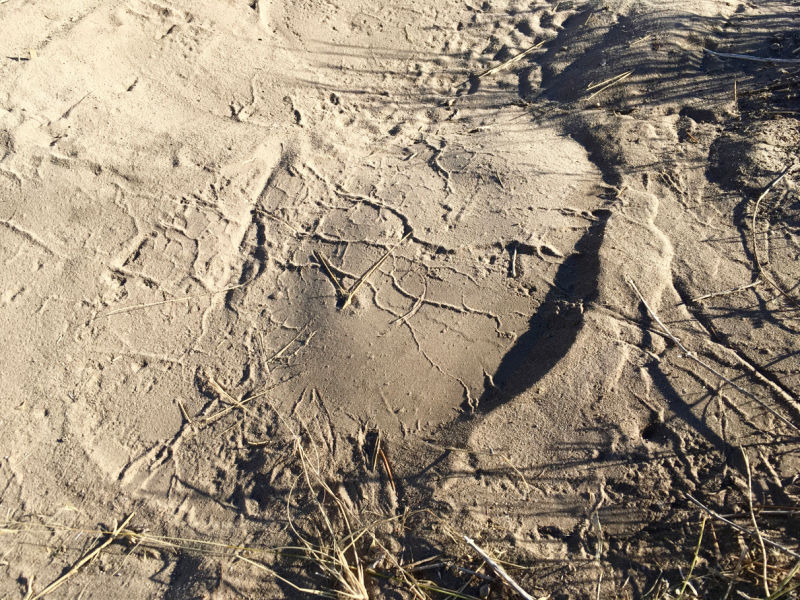

Having missed the behemoths likely by less than an hour, we reluctantly turned the truck south, past the gemsboks, the hartebeests, and the melons, back toward the city.
We only saw half of Khutse Game Reserve this time around, and the long drive north into the Kalahari still tugs at us. We will certainly be back. They say the lions prefer Moreswe Pan.
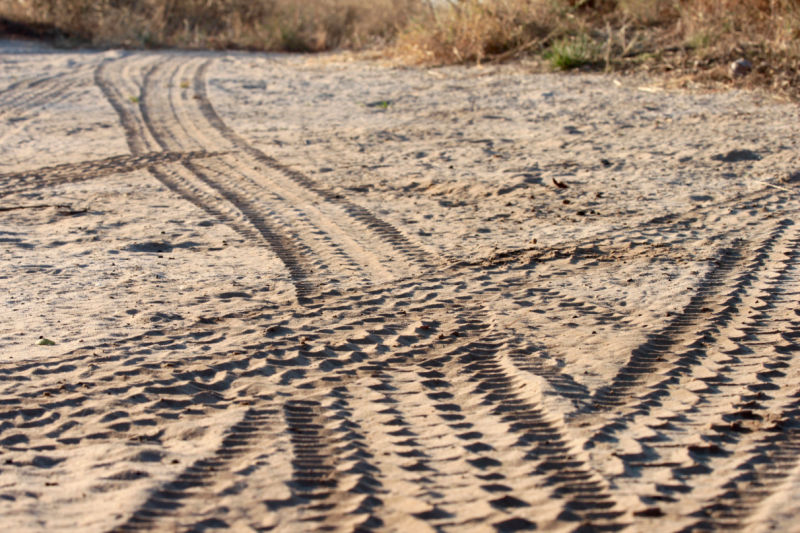
Follow the fun and game(s) from Botswana over on our blog, too: